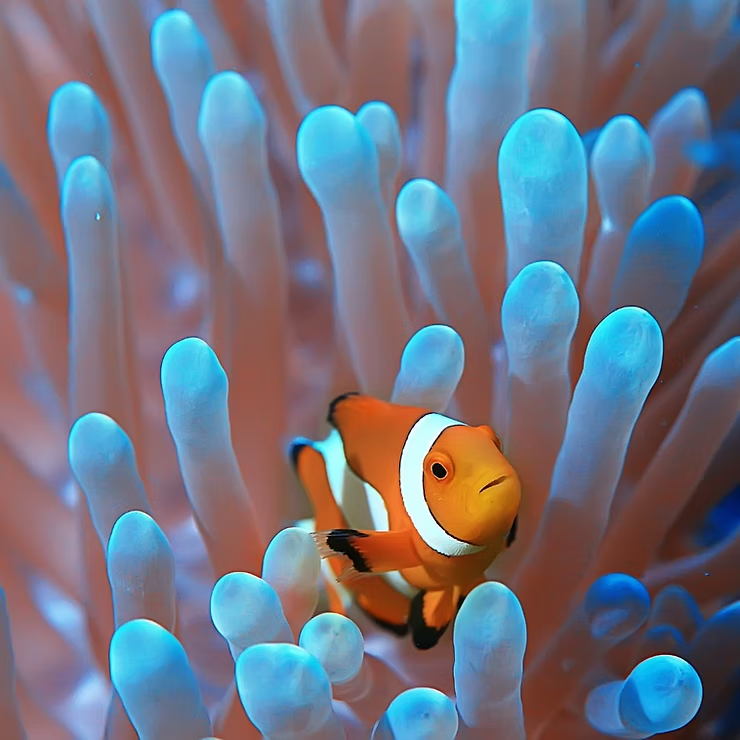Introduction
Coral reefs, often described as bustling underwater metropolises, are among the most diverse and vital ecosystems on Earth. Home to countless marine species, they provide food, shelter, and breeding grounds while sustaining intricate ecological processes. These reef communities depend on symbiotic partnerships, complex food webs, and delicate chemical balances that maintain their resilience. Yet, human activities and climate change increasingly threaten their survival. This article explores the interactions, biodiversity, and global significance of coral reefs, while highlighting conservation practices essential for their protection.
Key Takeaways
- Corals and symbiotic algae form the foundation of reef productivity and resilience.
- Detritus and coral mucus nourish a wide range of marine organisms.
- Phytoplankton and zooplankton drive food webs and influence biodiversity.
- Biogeochemical cycles regulate nutrient dynamics and reef health.
- Human activity and climate change significantly impact reef ecosystems.
The Symbiotic Dance of Corals and Algae
At the heart of reef survival lies the partnership between corals and dinoflagellates, microscopic algae living within coral tissues. Through photosynthesis, algae provide essential nutrients that fuel coral growth, while corals supply shelter and resources. This relationship not only supports reef structures but also enriches surrounding waters with organic matter, sustaining diverse marine life. Disruptions to this bond, such as bleaching, ripple across the entire ecosystem.
Organic Matter as a Food Source
Detritus and Mucus Dynamics
Reefs generate detritus and mucus, which act as nutrient-rich food sources. Much like compost in a garden, these by-products recycle energy back into the ecosystem. Coral mucus traps organic particles, while detritus from decaying matter supports plankton and small fish. In turn, these organisms feed larger predators, ensuring that little goes to waste within the reef’s food web.
Reef Structures and Biodiversity
Coral formations serve as natural architecture, providing nooks and crannies that foster biodiversity. They act as breeding grounds, protective shelters, and feeding spaces. Phytoplankton thrive in nutrient-rich waters around these structures, supporting food chains that extend to large predators. The distribution of corals directly shapes the community composition of reef ecosystems.
The Planktonic Pulse
Phytoplankton
These microscopic plants form the foundation of coral reef food webs. Diatoms and dinoflagellates are abundant, serving as primary producers and key indicators of reef health. Their balance with zooplankton ensures sustainable nutrient cycling.
Zooplankton
Zooplankton act as middlemen in the food chain, consuming phytoplankton and feeding fish, corals, and even whales. Their rapid response to water conditions makes them critical indicators of reef stability.
Predator and Prey Interactions
Energy transfer in coral ecosystems relies heavily on predator-prey relationships. Zooplankton feed on phytoplankton, only to be consumed by fish and other reef inhabitants. This cycle maintains balance, while shifts in plankton populations influence broader biodiversity. Diatoms and dinoflagellates, central to this chain, highlight the fragile equilibrium sustaining marine life.
Biogeochemistry and Nutrient Cycles
The Role of Nutrients
Nutrient salts like nitrogen and silicon shape phytoplankton growth, directly affecting reef health. Excess nutrients, however, can spark harmful algal blooms that suffocate corals. The metabolism of organic carbon, facilitated by phytoplankton and corals, keeps the reef’s chemical choreography in balance.
Human Impacts and Conservation
Human activity—overfishing, pollution, and carbon emissions—disrupts reef systems. Rising sea temperatures and ocean acidification drive coral bleaching and weaken resilience. Yet, sustainable practices can reverse some damage. Community-led cleanups, innovative plastic reduction technologies, and stronger policies all play vital roles in protecting reefs.
Sustainable Practices for Reef Protection
- Adopting plastic-free policies and circular economy initiatives.
- Investing in clean fishing gear and aquaculture innovations.
- Supporting local communities through conservation education and citizen science.
Conclusion
Coral reefs are more than natural wonders—they are life-sustaining cities beneath the waves. Their health depends on intricate symbioses, balanced nutrient cycles, and resilient biodiversity. As climate change and human pressures intensify, proactive conservation is crucial. By combining scientific insight with community action, we can safeguard these ecosystems and ensure they continue thriving as vibrant marine metropolises for future generations.
Frequently Asked Questions
What role do dinoflagellates play?
They photosynthesize within coral tissues, supplying energy for reef growth and resilience.
How do detritus and mucus support reefs?
They provide organic nutrients that feed plankton, fish, and other marine organisms.
Why are phytoplankton important?
They form the base of reef food webs, sustaining zooplankton and larger predators.
How does human activity affect reefs?
Pollution, overfishing, and climate change degrade coral health and disrupt marine biodiversity.
What conservation strategies help?
Plastic-free policies, sustainable fishing, and education programs strengthen reef protection efforts.

